Mention “mistletoe” this time of year and most people think fondly of potted Christmas trees and poinsettias, or of traditions like kissing under a bundle of white-berried boughs, cutting down an evergreen tree in the forest, or taking care of a Christmas tree at home.
But beneath all the holiday cheer lurks an opportunistic plant with both a “naughty or nice” side.
But not like naughty in the kissing-with-tongue sense: Eating the berries of certain species can lead to illness or even death (in severe cases), yet other types of mistletoe have historically been used to treat a range of ailments, including leprosy, infertility, epilepsy, and even cancer.
(In fact, recent research suggests that mistletoe extract injections could be the next big thing in cancer therapy.)
How this seemingly innocuous—yet deviously toxic—plant made its way into our Christmas culture as the “kissing plant” is somewhat of a mystery.
In nature, mistletoe is a parasitic plant that can actually kill its host trees. But at Christmastime, mistletoe is a symbol of romance that inspires people to pucker up.
What’s the significance of mistletoe at Christmas? And where did the mistletoe tradition come from?
Mistletoe owes its colorful history to three things: The tears of a mother for her own son. The sticky seeds of berries that resemble semen (yep, semen). And good luck for those who picked a berry for every kiss.
Intrigued? I sure am!
Let’s go back to Norse mythology and explore the evolution of the strange and beloved kissing tradition.
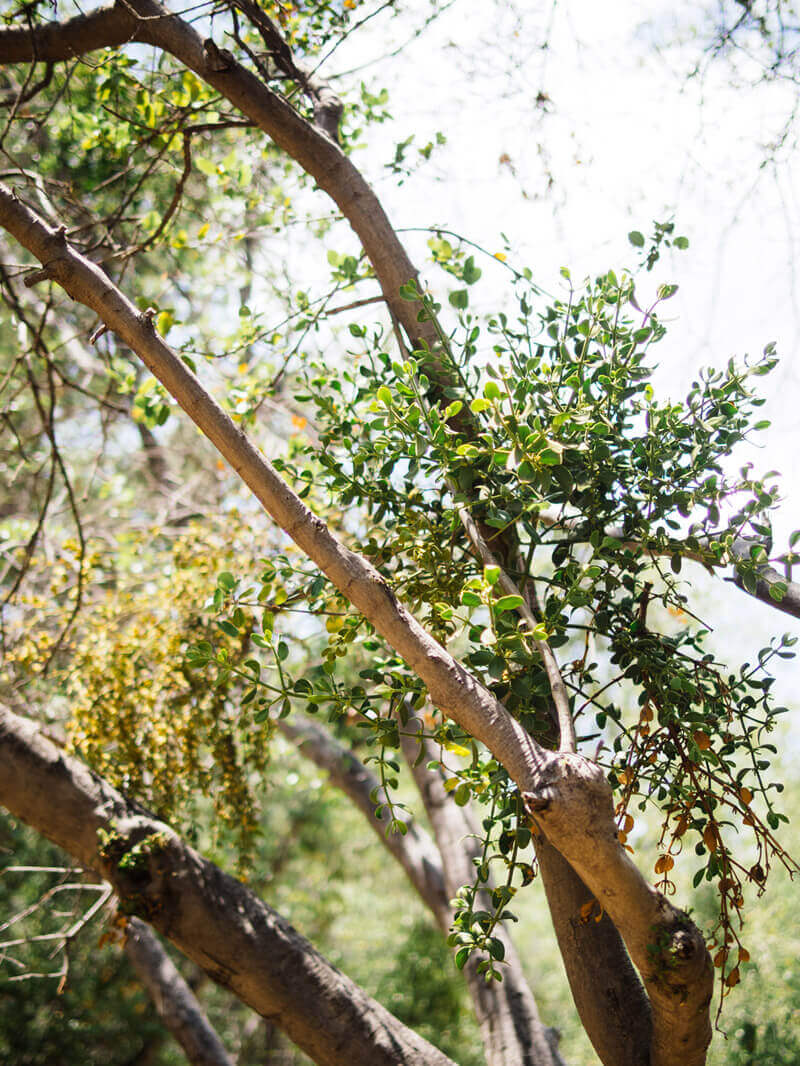
Mistletoe in mythology
Some historians believe the tradition of kissing under the mistletoe goes back to the Norse god Baldur, god of the summer sun.
According to Norse mythology, Baldur dreamed about his own death and fell into depression, believing that every living thing was out to kill him.
He was so beloved by the other gods that they resolved to protect him from the dangers of the world.
His mother Frigg, goddess of love, marriage, and beauty, took an oath from all of the elements, plants, and animals that they would not harm Baldur, but neglected to extract that same promise from the young and insignificant mistletoe.
When Loki, god of mischief, discovered the oversight, he made a poisoned dart with the mistletoe and used it to kill Baldur in front of all the gods.
The berries became the tears of his mother, and it was decreed that henceforth, mistletoe would bring only love into the world and not death.
It was placed under doorways so that it would never be overlooked again, and any two people passing under the plant would exchange a kiss in memory of Baldur.
So is this why we kiss under the mistletoe? Let’s keep going…
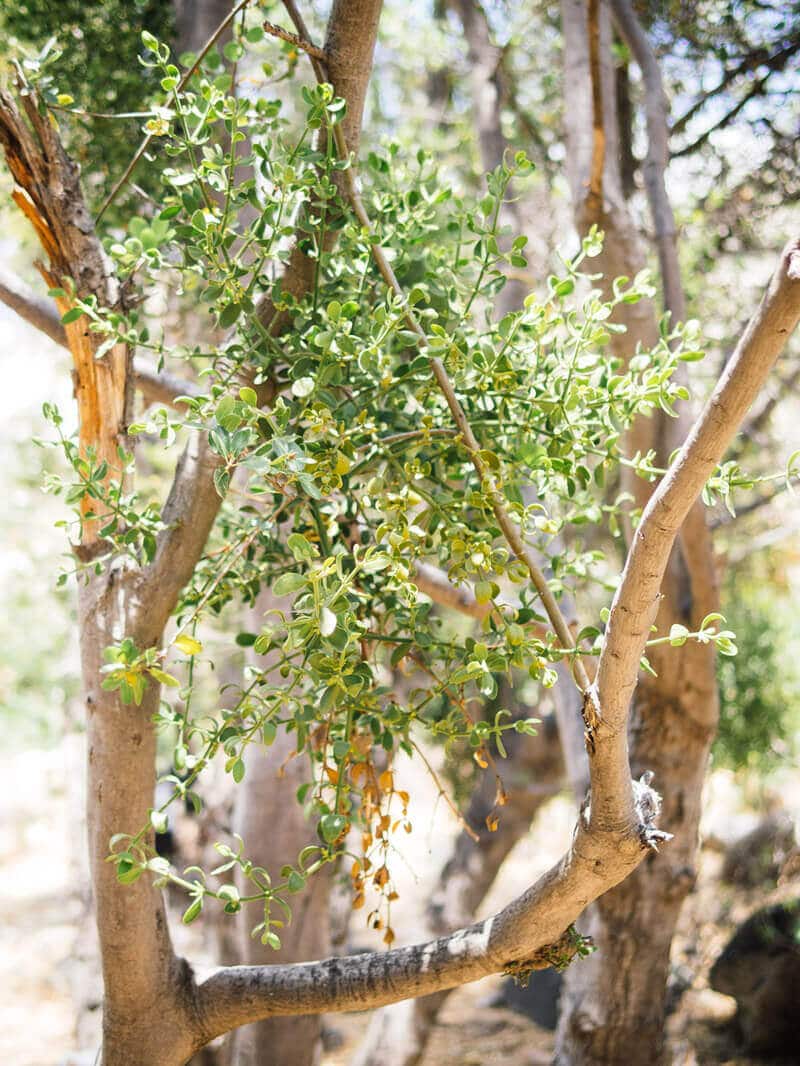
Mistletoe as a sexual symbol
Mistletoe also carries special meaning as a symbol of fertility. Since it retains its greenery all through winter (seemingly by magic as it has no roots) and blooms even through the darkest days of the season, it’s treasured as a token of eternal life.
Apparently the hero of the Aeneid held this belief too, as he brought a bough of what was thought to be mistletoe, this symbol of vitality, to the underworld.
The Celtic druids considered the plant sacred and hung it above doorways for luck. As early as the 1st century AD, they conjured the mystical powers of the plant in a religious ceremony called the ritual of oak and mistletoe to cure infertility.
Greco-Roman history reveals that Diana, goddess of the moon, wore a crown of mistletoe as an emblem of fertility and immortality (not to mention the berries appeared to resemble little moons).
One theory even says that the seeds of the plant gave rise to its reputation as a life-bearer because they’re sticky, like semen.
Since mistletoe is seen as a symbol of fertility and life, this could be a reason why we now kiss underneath it.
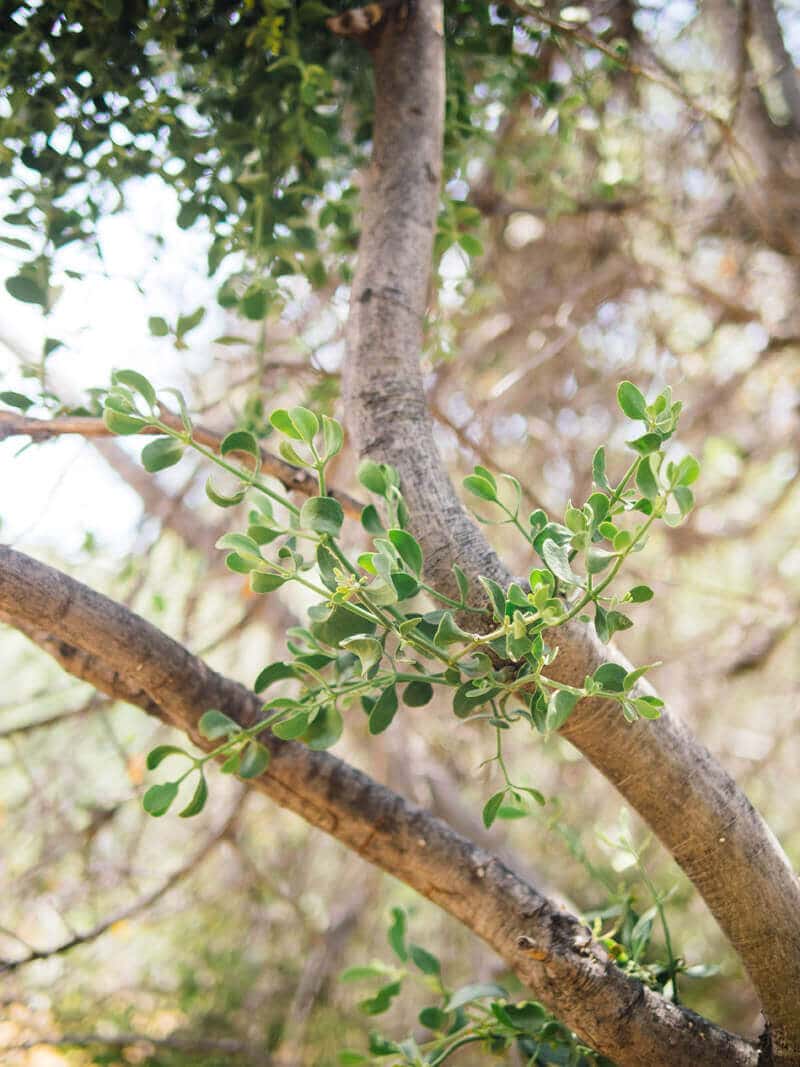
Mistletoe as the kissing plant
As we fast-forward through history, we come upon the British in the 18th or 19th centuries, who started hanging mistletoe in their homes to celebrate Christmas.
Superstitions of the day suggested that good luck came to those who kissed under the mistletoe, and bad luck to those who didn’t.
It was customary for a person to pick a berry off the bough for every kiss until no more berries remained (after which the kissing would cease, perhaps to the relief of the young ladies as described by Charles Dickens in The Pickwick Papers).
These days, planting a smooch under the mistletoe is a throwback to all this good old-fashioned fun, but most people probably don’t give a second thought once they pass underneath it.

Mistletoe in botany
Botanically, it has a fascinating tale to tell as well.
While mistletoe originally referred to the European species, Viscum album, the term has broadened over time to include thousands of other species of parasitic plants with similar habits all over the world.
Here in North America, we have Phoradendron leucarpum (also known as American mistletoe, Eastern mistletoe, or oak mistletoe).
Mistletoe is a hemiparasitic plant; that is, it’s capable of photosynthesis but gets most (if not all) of its nutrients from the host plant.
In some parts of California, mistletoe overtakes oak trees to the point where mistletoe clumps become more prominent than the oak leaves themselves. Someone unfamiliar with it may think the mistletoe itself is the tree!
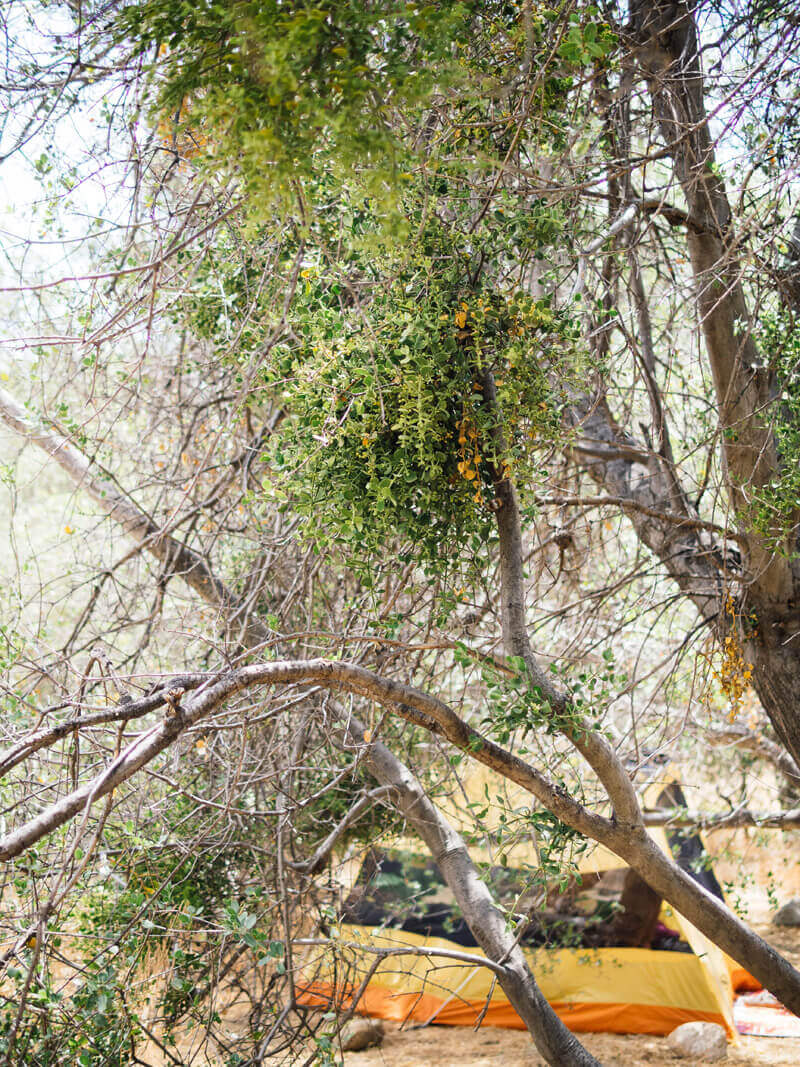
The mistletoe arrived there via seeds (or more accurately, drupes)—seeds ingested by birds, which are attracted to its berries, and deposited onto the tree.
The seeds survive in and germinate from bird droppings, but also travel to new host plants on the beaks or feet of birds (that’s the semen-like stickiness working for them, a substance called viscin).
Once a seed germinates on a host tree, it hangs out (or hangs on is more like it, thanks to the viscin) and relies on its own photosynthesis to sprout new leaves.
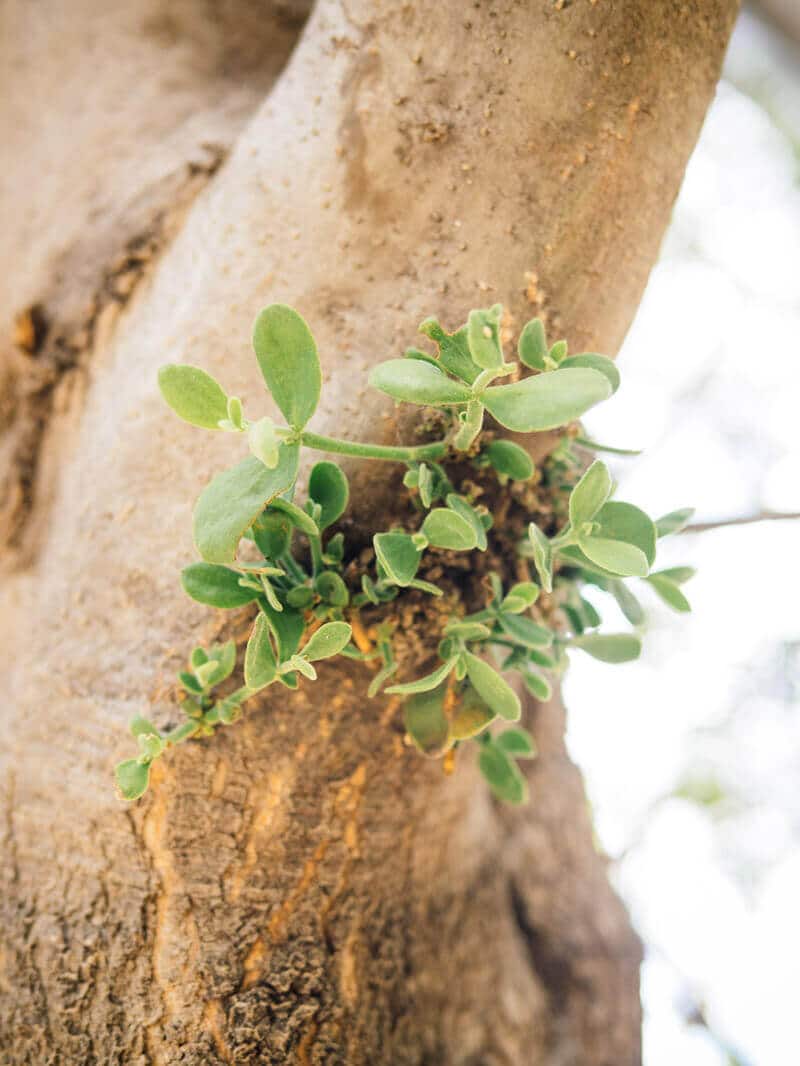
Eventually, it sinks its roots into the bark, attaches to the circulatory system of the host, and begins to establish itself by pulling water and minerals from the tree that are necessary for its survival, essentially becoming a freeloader.
A very persistent freeloader that never goes away!
Research has shown that the wood of mistletoe actually contains twice as much potash and up to five times as much phosphoric acid as the wood of the host tree.
As a parasite, mistletoe never takes root in the soil like other plants, nor does it derive nourishment from decayed bark like fungi. It lives on its host and sometimes on other mistletoe.
As it continues to grow larger, it stunts the development of the host and often kills the branch it’s parasitized. Widespread infestation can suck a host dry and kill it altogether.
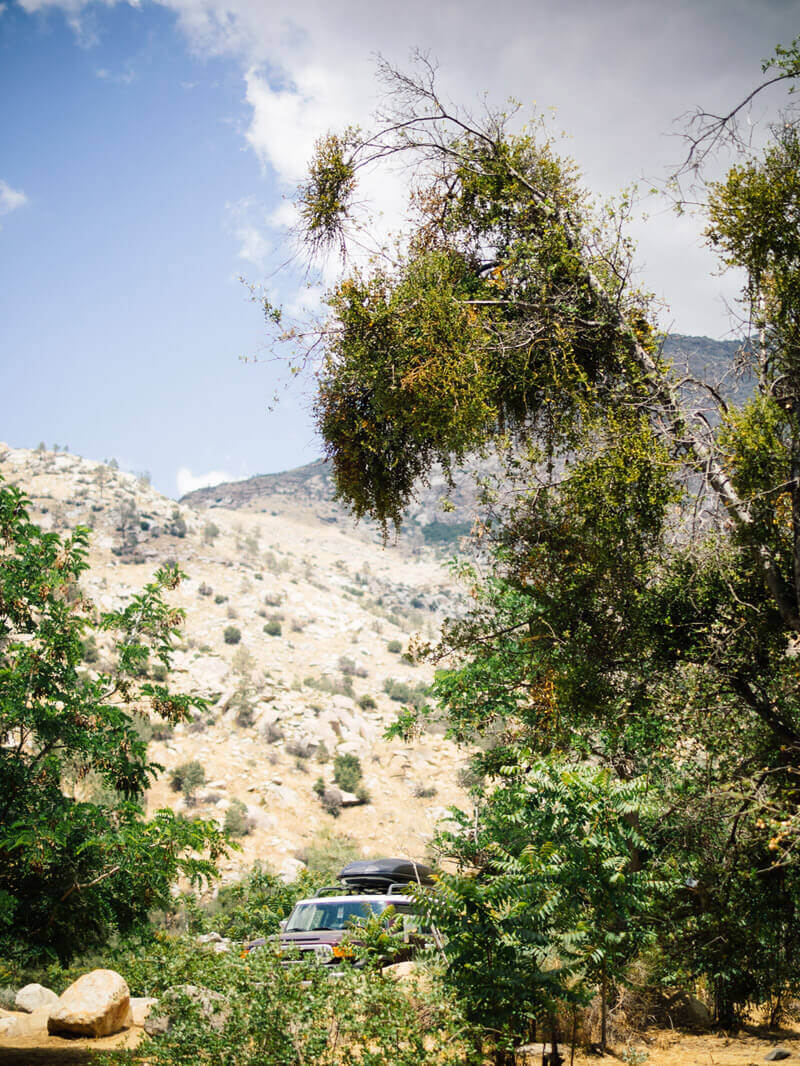
Despite its dark side, mistletoe carries such ecological importance that it’s considered a keystone species—a vital member of many forests that promotes biodiversity and plays a role in woodland renewal.
It may not be much to look at with its tangled mess of bushy branches, and you might even think of it as a villain in the botany world, a plant that feeds off another and eventually kills it.
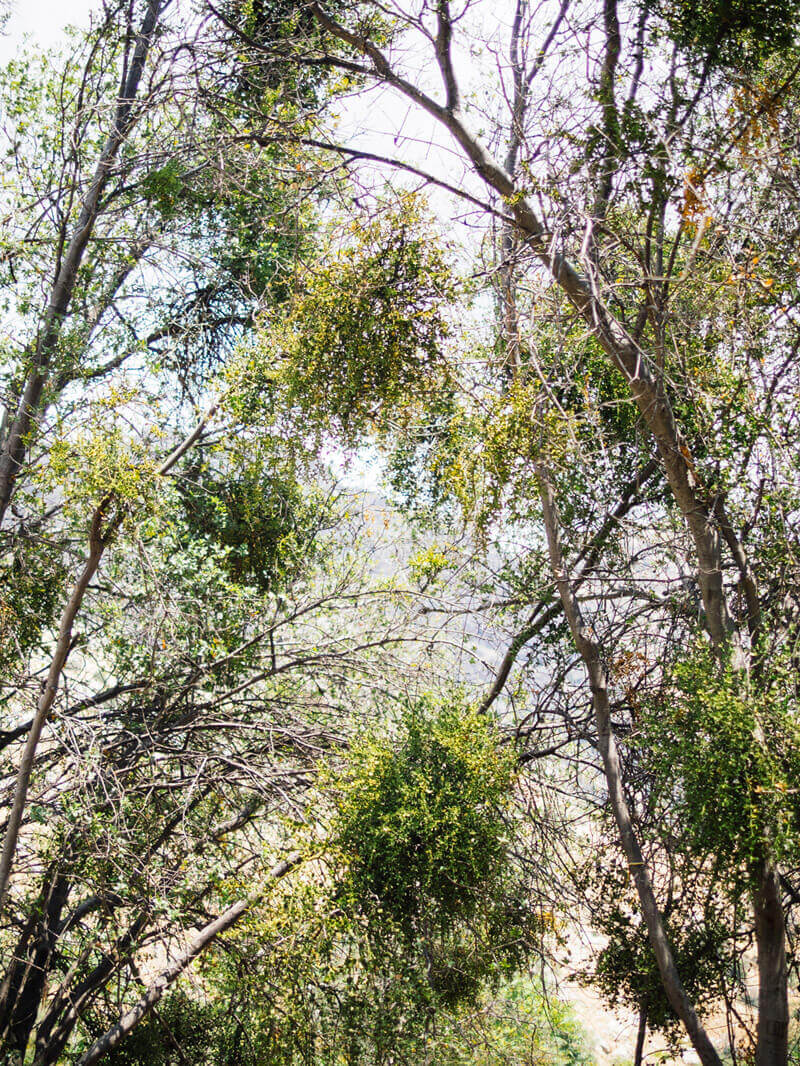
But the next time you pass a mistletoe in the wild, think of it as this: a plant that pulls energy from its host and in turn, provides food and habitat for a wider range of animals in the grand scheme of the ecosystem.
This post updated from an article that originally appeared on December 23, 2016.


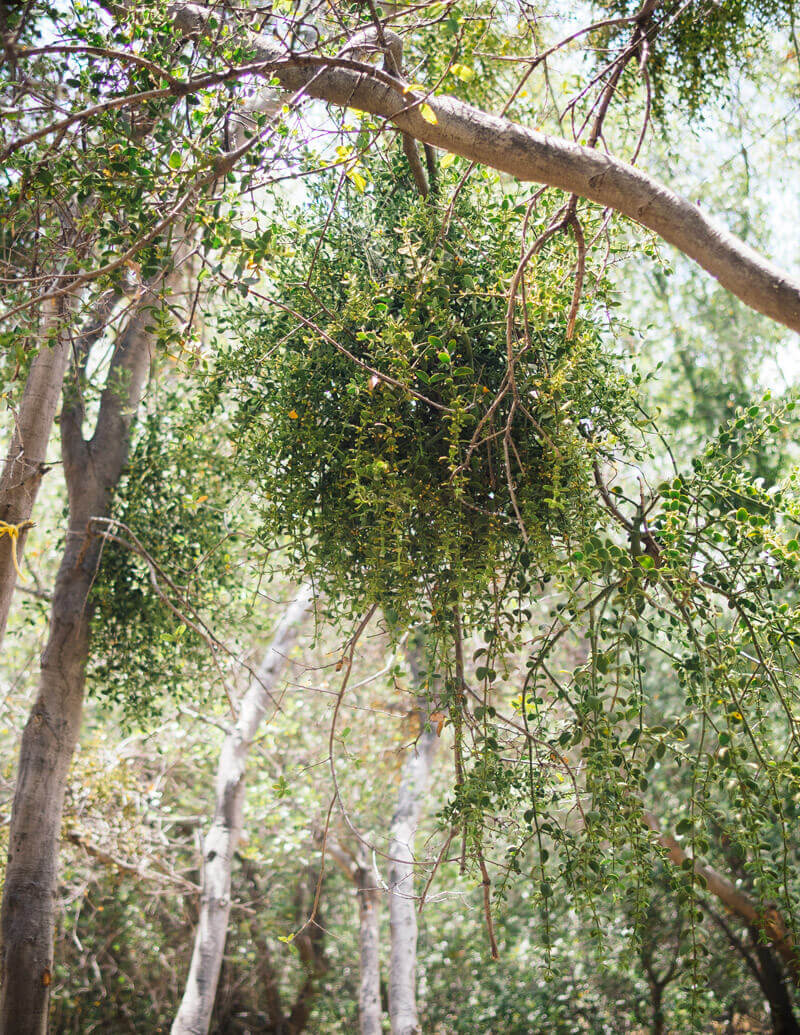













You guys…
The tradition is because mistletoe was used at fertility rites.
There is a preparation for this plant that will put you into outer space, in an altered state that is so incredibly arousing and heart opening and mood shifting, you wouldn’t understand without having tried it.
But there’s no mental conjecture or silly events. It’s because if processed right this is an aphrodisiac stronger than street substances. Doubtless the ancestors knew that.
If you do your research you can find events that host for it on the West Coast, it’s usually combined with Kanna. They are pure hands off events, very strict, for good reason.
Why spread stupid myths? Some teenagers made up kissing under mistletoe in the 1700s. It was popularized by a song in 1784 and then by a story in 1820. It has no ancient roots. It’s just from England.
Interesting! In all my research, I haven’t come across the theory that the kissing tradition came from teens in the 1700s. Like all folktales, I guess we’ll never truly know.
Interesting like most of your writings. Never would have considered researching this! Thanks
Thanks for this great article. I really enjoyed reading all of it. We lived in Florida for 30 years and my husband would always gather me a bunch of “live” mistletoe for the holidays when he would go into the marsh airboating. We retired to Missouri (I know, just the opposite of most people) love it here but I haven’t seen any mistletoe to date in any of our trees. Thanks again for posting this.
Amazing information ty
You’re welcome!
I’ve always wondered where the tradition of kissing under the mistletoe originated! Thanks for such an in-depth explanation of the history. Reading this, I started to wonder where the name mistletoe came from (like, what exactly is a mistle, and it must have odd-looking toes!) Looks like it comes from the Old English “misteltan”. Mistel means dung, and tan means twig…so “dung-on-a-twig”. Definitely an interesting plant!
Thank you so much for the wealth of knowledge regarding mistletoe! I love learning these facts and old stories about traditions and how they originated, especially when they involve plants. Merry Christmas!
Weird fact about mistletoe. Its the state flower of Oklahoma. I’m not sure what it means to have the state flower a parasite.
LOL, that may be why Oklahoma finally decided to change its state flower to the Oklahoma rose about 10 years ago! The mistletoe, however, remains as the state floral emblem.
We have the European species here, people sell it in the streets to take home for Christmas. It is an amazing plant, there was apparently quite a lot about it on TV his Christmas. The berries were used to make glue, my Grandfather even used to tell me that the glue then was used to catch little birds to be sold as pets – they would land on a reed or a branch that was smeared with the glue and it was so sticky that they could not fly off.
It’s a fascinating plant indeed, especially with its dual nature.